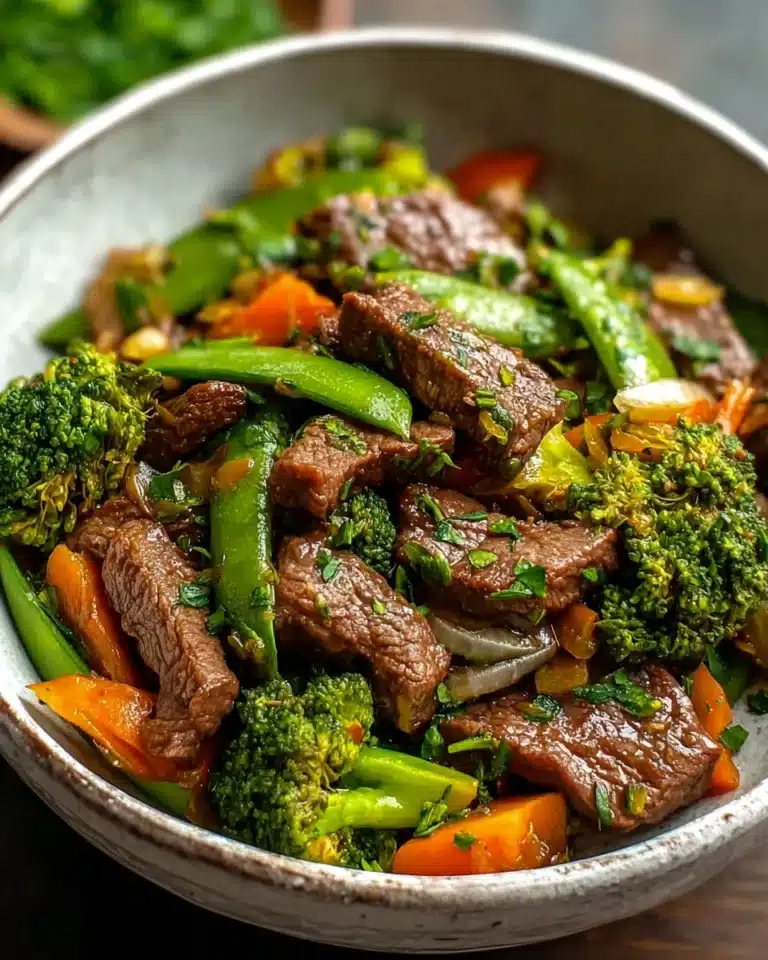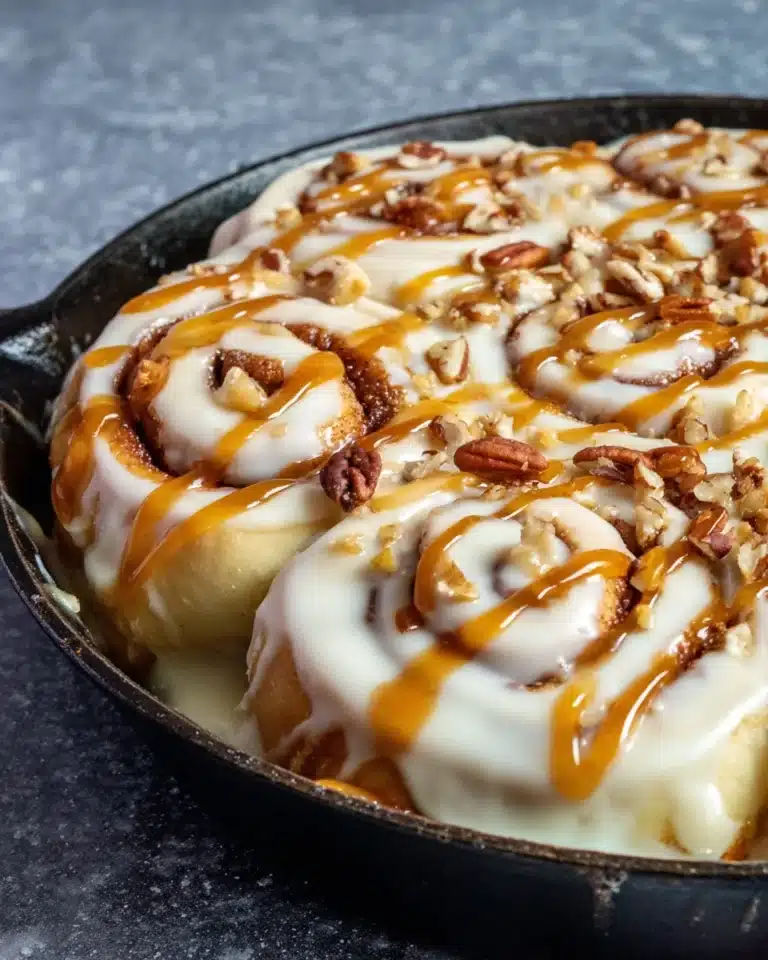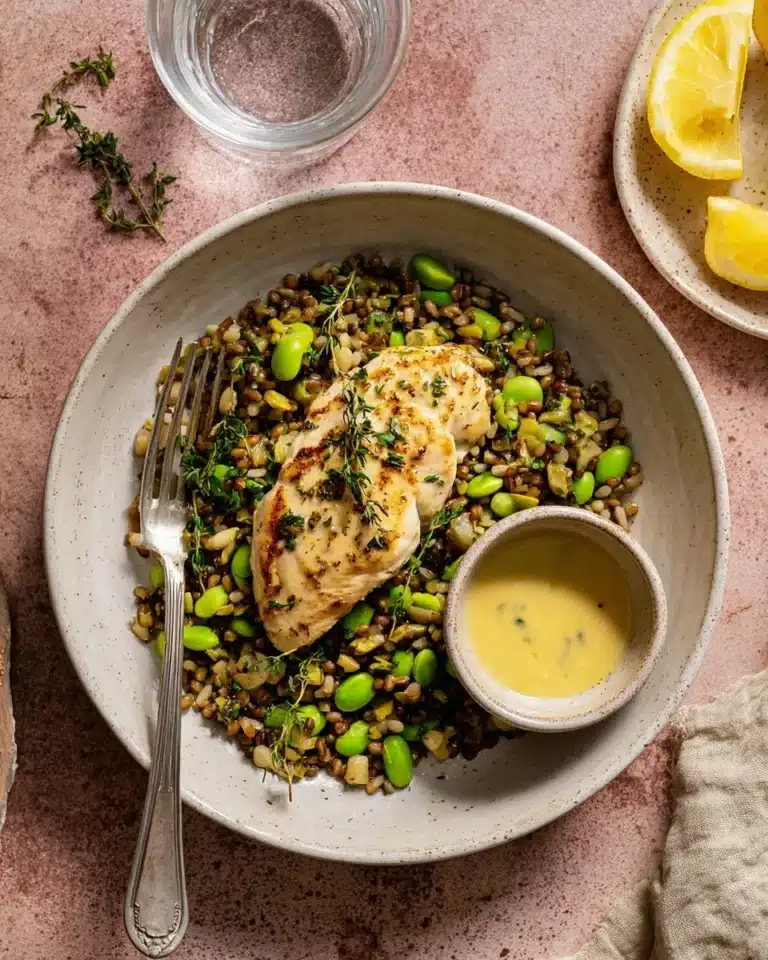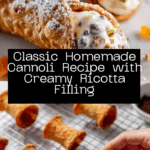If you have ever dreamed of creating a truly authentic Italian dessert at home, this Homemade Cannoli Recipe is exactly the gateway to that delicious experience. Imagine golden, crispy shells enveloping the richest, creamiest ricotta filling, subtly enhanced with dark chocolate, cinnamon, and a hint of Marsala wine. Every bite offers an intoxicating balance of textures and flavors that make homemade cannoli a celebration-worthy treat that feels indulgent yet surprisingly approachable. Whether you’re aiming to delight family, impress friends, or simply savor Italian tradition, this recipe invites you to dive into a hands-on culinary adventure filled with warmth and joy.
Ingredients You’ll Need

To master this Homemade Cannoli Recipe, you won’t need an overwhelming list of ingredients, just some carefully chosen essentials that each play a key role in building flavor, texture, and authenticity. From silky ricotta to the perfect balance of flour and butter in the shells, every component contributes to an irresistible finished masterpiece.
- Whole milk ricotta cheese: The creamy backbone for the filling; always strain it well for the best texture.
- Dark chocolate: Finely grated to add bursts of bittersweet crunch throughout the creamy filling.
- Confectioners’ sugar: To sweeten gently and dust for a beautiful presentation.
- Ground cinnamon: Offers subtle warmth and aromatic depth to the ricotta filling.
- Candied fruit (optional): Adds a fun fruity surprise and chewy contrast for adventurous eaters.
- All-purpose flour: The base for your golden, crisp cannoli shells.
- Salt: Enhances the sweetness and balances the flavors perfectly.
- Sugar: Helps develop a delicate sweetness in the pastry dough.
- Unsalted butter: For tender, flaky shells with a rich flavor.
- Eggs: Provide structure and bind the dough beautifully.
- Marsala wine: Infuses the dough with an authentic hint of sweetness and subtle complexity.
- Egg wash (egg white mixed with water): Seals the shells to keep them perfectly shaped during frying.
- Oil for frying: Use a neutral oil that heats evenly for the crispiest shells.
How to Make Homemade Cannoli Recipe
Step 1: Strain the Ricotta
Starting off, patience is key. Place your whole milk ricotta in a fine mesh sieve lined with cheesecloth or a clean towel, letting it drain overnight in the fridge. This step is essential to remove extra moisture, turning that ricotta into a silky, dense filling perfect for piping into your shells later.
Step 2: Prepare the Pastry Dough
In a large bowl, sift together flour, salt, and sugar, then rub in the cold, diced butter until the mixture resembles coarse sand—this is the secret to tender shells. Add your eggs and that delicious Marsala wine, mixing until combined. Knead gently on a floured surface until you get a smooth dough ball. Chill it so the butter firms up, which makes rolling much easier and helps the shells crisp perfectly when fried.
Step 3: Roll and Cut Dough Circles
Once chilled, it’s time to work that dough thin—aim for just 1/16-inch thick for that satisfyingly crispy texture. Using a 3-inch cutter or drinking glass, cut out perfect circles. If the dough resists, a quick chill on a baking sheet will help relax it before continuing.
Step 4: Shape the Cannoli Shells
Wrap each round carefully around a floured cannoli mold, sealing the edges with an egg wash. This step may take a bit of finesse, but it’s rewarding! Getting a tight seal helps maintain the iconic cannoli shape during frying.
Step 5: Fry to Golden Crispness
Carefully heat your oil to 350°F and fry a few shells at a time until golden and crispy. The aroma while frying will already have you dreaming about that first bite. Once slightly cooled, gently twist each mold to release the shell without breaking it. Store your shells airtight until ready to fill.
Step 6: Mix the Luscious Filling
In a bowl, combine the drained ricotta, grated dark chocolate, confectioners’ sugar, cinnamon, and optional candied fruit. Blend these ingredients until well combined, then chill to marry the flavors and firm up the filling, making it perfect for piping.
Step 7: Fill and Finish Your Cannoli
Just before serving, fill your shells with the luxurious ricotta mixture—filling them early risks sogginess, so resist the urge to fill ahead! A final dusting of powdered sugar and chocolate shavings adds that picture-perfect touch to an already divine dessert.
How to Serve Homemade Cannoli Recipe
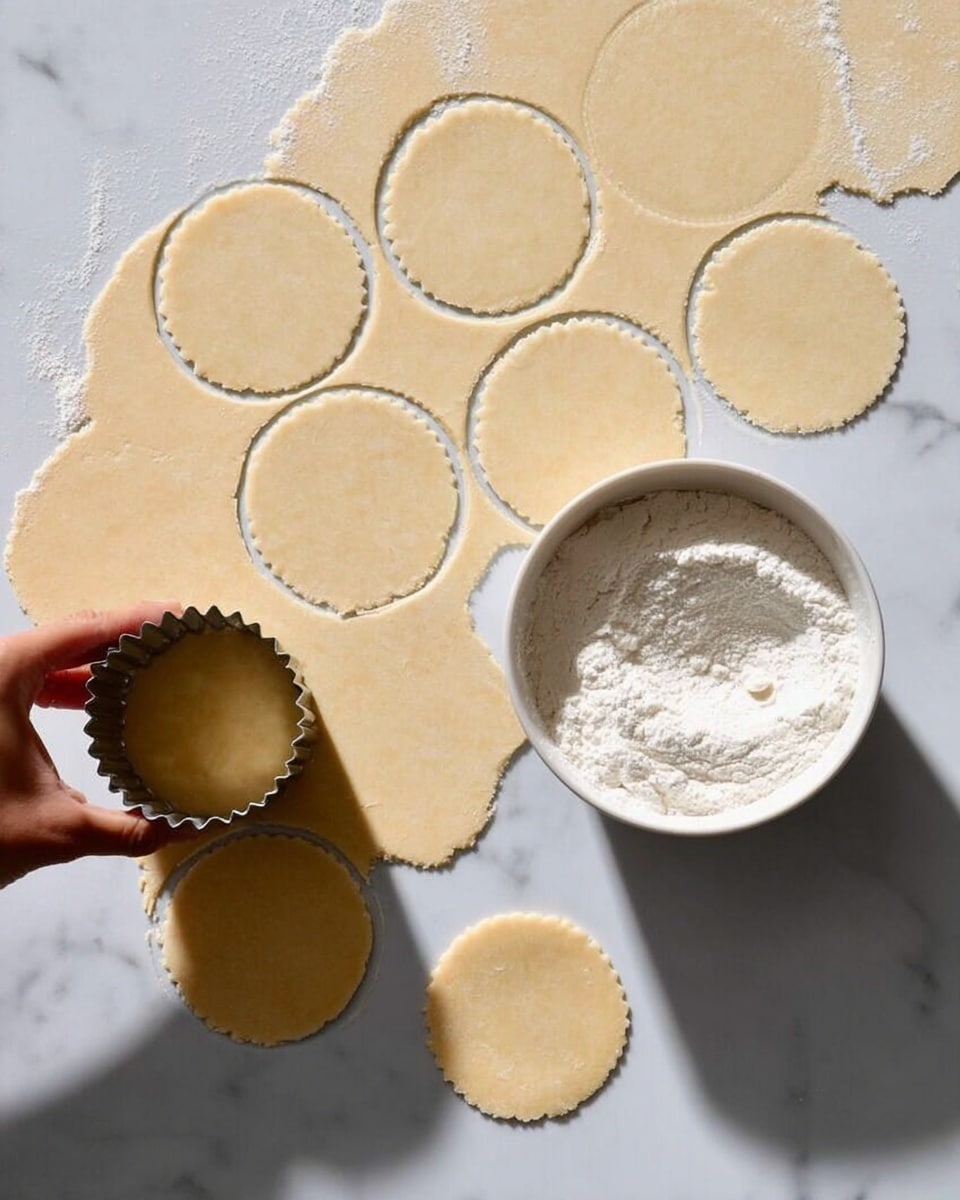
Garnishes
A sprinkle of extra confectioners’ sugar and a sprinkle of grated dark chocolate is all you need for stunning cannoli presentation. For a little flair, chopped pistachios or more candied fruit on the ends offer a lovely pop of color and texture that intensifies the pleasure of each bite.
Side Dishes
While cannoli often shine as a solo dessert, pairing them with a scoop of vanilla gelato or a drizzle of rich espresso adds layers of indulgence. A light lemon sorbet or fresh berries also complement the sweet, creamy filling with refreshing brightness.
Creative Ways to Present
Think beyond the traditional stack. Serve cannoli nestled in a rustic wooden crate lined with parchment, or arrange them on a decorative platter with edible flowers for an elegant touch. Mini cannoli versions also work beautifully as finger foods for parties, offering a playful way to share this classic Italian treat.
Make Ahead and Storage
Storing Leftovers
Unfilled cannoli shells keep wonderfully at room temperature in an airtight container for about a week, maintaining their crispness perfectly. Keep your filling refrigerated in a sealed container for up to five days, so you can whip up last-minute treats any time.
Freezing
You can freeze unfilled shells for up to two weeks without losing that quintessential crunch. The filling freezes well too, stored in an airtight container or bag for about a month. When thawed, just stir gently to recombine any separated liquids, and you’re ready again.
Reheating
Reheat frozen shells briefly in a low oven to restore crispness if needed, but avoid pre-filling before reheating. Since the filling doesn’t require heat, thaw it in the fridge and fill the shells fresh to preserve the ideal contrast of textures.
FAQs
Can I use part-skim ricotta for the filling?
While whole milk ricotta delivers the creamiest, richest filling, part-skim ricotta can work in a pinch, but you may want to strain it even longer to remove excess moisture. This helps keep your filling thick and luscious.
Is Marsala wine necessary in the dough?
Marsala wine contributes subtle floral notes and sweetness that enhance the pastry’s flavor, but if you can’t find it, dry white wine or even a splash of orange juice is a reasonable substitute. Just avoid skipping the liquid entirely to keep the dough’s texture right.
Why do cannoli shells get soggy so quickly?
Moisture from the filling seeps into the crisp shell over time, which is why the best practice is to fill cannoli just before serving. If filled early, the pastry gradually loses its crunch and becomes soft.
Can I make gluten-free cannoli shells?
Traditional cannoli dough relies on gluten to hold its structure and crispness. While gluten-free versions exist and can be fun to experiment with, they often require specialized flours and techniques, so sticking to the classic recipe yields the most authentic results.
What’s the best way to store leftover filled cannoli?
Unfortunately, filled cannoli don’t keep well due to sogginess, so it’s best to consume them immediately. If you have leftovers, keep filling and shells separate, refrigerate the filling, and try to enjoy the shells within a week.
Final Thoughts
There’s truly something magical about creating this Homemade Cannoli Recipe from scratch—the process feels intimate, and the results delight with every crisp bite and creamy spoonful. It’s a hands-on, heartfelt dessert that transforms humble ingredients into a radiant celebration of Italian tradition. So get ready to roll, fry, fill, and savor this timeless classic, because making your own cannoli is not just a recipe, it’s a joyful experience you’ll love sharing again and again.
PrintHomemade Cannoli Recipe
This classic homemade cannoli recipe features crisp, golden-fried pastry shells filled with a rich, creamy ricotta cheese mixture enhanced with dark chocolate, cinnamon, and optional candied fruit. Enjoy these delightful Italian pastries fresh for a perfect balance of texture and flavor.
- Prep Time: 12 hours 30 minutes
- Cook Time: 15 minutes
- Total Time: 12 hours 45 minutes
- Yield: 18 to 24 cannoli shells
- Category: Dessert
- Method: Frying
- Cuisine: Italian
Ingredients
For the Filling
- 12 ounces whole milk ricotta cheese
- 2 ounces dark chocolate, finely grated, plus more for dusting
- 3/4 cup confectioners’ sugar, plus more for dusting
- 1/2 teaspoon ground cinnamon
- 3 ounces candied fruit, finely chopped (optional)
For the Pastry
- 2 cups (256 grams) all-purpose flour, plus more as needed
- Pinch of salt
- 3 tablespoons sugar
- 4 tablespoons unsalted butter, diced
- 2 eggs, beaten
- 3 tablespoons Marsala wine
- 1 egg white, lightly beaten mixed with 1 tablespoon water (for egg wash)
- Oil for frying
Instructions
- Strain the ricotta: Place a fine mesh sieve over a bowl and line it with two layers of cheesecloth, a flour sack towel, or sturdy paper towels. Add the ricotta cheese and smooth it into an even layer using the back of a spoon. Refrigerate overnight to drain excess moisture, ensuring a thick filling.
- Prepare the pastry dough: Sift together the flour, salt, and sugar into a large bowl. Rub in the diced butter with your fingertips until the mixture resembles coarse crumbs. Add the beaten eggs and Marsala wine and mix to form a dough. Turn onto a floured surface and knead until smooth. If sticky, add flour a little at a time. Wrap and chill the dough in the refrigerator for 1 hour.
- Roll out and cut the dough: On a floured surface, roll dough as thinly as possible (about 1/16 inch). Flour and lift the dough frequently to prevent sticking. If dough resists rolling, chill it on a baking sheet for 15 minutes before continuing. Cut into 3-inch rounds using a cookie cutter or glass. Expect 18 to 24 rounds.
- Form the cannoli shells: Dust cannoli molds with flour. Wrap each dough round around a mold, dampen the edges with the egg wash, and press to seal the seam.
- Fry the shells: Heat oil in a saucepan to 350°F. Fry a few shells at a time until golden and crisp, about a few moments each. Remove with tongs and drain on paper towels. Once cool enough to handle, carefully twist molds to release shells. Repeat until all shells are fried. Cool completely and store in an airtight container if not filling immediately.
- Mix the filling: In a bowl, combine the strained ricotta, grated dark chocolate, confectioners’ sugar, cinnamon, and candied fruit if using. Mix well and refrigerate until ready to use. Transfer to a piping bag for ease of filling if desired.
- Fill and serve: Just before serving, pipe or spoon filling into each shell. Dust with extra confectioners’ sugar and grated dark chocolate for garnish. Serve immediately to maintain crispness.
Notes
- Fill cannoli shells just before serving to prevent sogginess.
- Store unfilled fried shells in an airtight container at room temperature for up to one week.
- Freeze unfilled cannoli shells for up to 2 weeks to retain crispness.
- Freeze filling in a freezer-safe container for up to 1 month; stir gently after thawing to recombine if separated.


